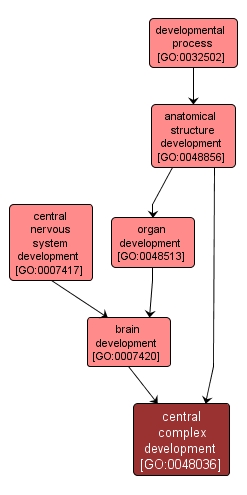| Desc: |
The process whose specific outcome is the progression of the central complex over time, from its formation to the mature structure. The central complex region of the insect brain is thought to be crucial for control of locomotive behavior. Located in the middle of the two protocerebral hemispheres, it comprises four neuropilar regions, the fan-shaped body, the ellipsoid body, the protocerebral bridge and the paired noduli. |














